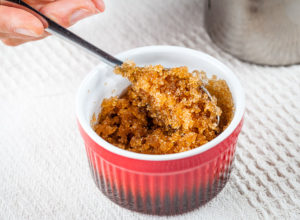Shea butter has nothing to do with pigs, but is derived from the nuts of a tree that grows in Africa. In Estonian, it’s actually called butter seed oil. Shea butter is known as the gold of African women, because it has been produced by women for centuries, and with the income from its sale, women have been able to make a significant difference to the quality of life for themselves and their children.
How shea butter is made
Shea trees grow wild in the savannahs of central and western Africa and need to reach 50 years of age before they start to bear fruit. They are indigenous to Africa and do not grow on any other continent. Shea butter is extracted from the mature shea fruit, the kernel of which is extracted by hand. Extracting the butter from the nut is hard work and takes a long time. First, the fruit has to be harvested by hand from the trees. This can be done from July to October. The nuts have to be removed from the shell and left to dry in the sun. Once the nuts are dry, they are pricked with wooden knives to loosen the shells. Once the nut is separated from the shell, the crushed seeds are roasted and allowed to cool. Next, the seeds are rubbed so that the nuts become a soft brown paste. Water is added to extract the fat and then the mixture is boiled for several hours. Finally, the separated oil can be scooped out. As it cools, the oil turns into a solid, which is what makes this highly prized shea butter.
Possible uses
Shea butter has been used for centuries by African women to protect their skin from the hot Sahara desert winds. Shea butter is mentioned in almost every document on African history and medicine. In addition to skin care, shea butter is also used as a food in many parts of Africa, as it is an all-natural edible nut butter. Although it is only in recent decades that shea butter has made its way out of Africa, it is hard to find a cosmetics manufacturer today that does not include it in some of its products (creams, soaps, etc.). Shea butter contains vitamins A, E and F, which nourish and regenerate the skin, and it is one of the best natural moisturisers because it contains four fatty acids.Shea butter can also be used naturally, for example as a balm after shampooing, a body cream or a make-up remover. Apart from cosmetic uses, shea butter is also used for therapeutic purposes to treat burns, wounds, skin infections and scars, as well as to prevent nappy rash. It also helps to treat psoriasis and eczema. Shea butter reduces wrinkles and also protects the skin from harmful sun rays. Shea butter can also help people who develop sun rashes or allergies, as it has a sun protection factor of SPF 2-3. However, large industries tend to use refined shea butter, or shea butter that has been treated with heat and chemicals to remove its fragrance and yellowish colour, and with it many of its beneficial substances. Some studies have shown that the refining process can remove up to 75% of the nutrients naturally present in shea butter.
Shea or Ore Ore workshops
Örreke uses shea butter in her at-home beauty workshops. The shea butter she uses is specifically unrefined, which makes the lip balms and body scrubs especially vitamin-rich and skin-friendly. We buy the shea butter from Mondo and with it, the participants in our body scrub and lip balm workshops make a small contribution to the development of women’s entrepreneurship in Ghana. Click here for more information on the Örrekes home cosmetics workshops.
You can find a tutorial on how to make whipped shea butter cream here.

